What costs taxpayers $150 million each year, no longer serves the purpose it was designed to serve, has its usefulness in continuing decline and — through its blockage of passage to over 5,000 miles of pristine, high elevation habitat — has been identified by the best available science as the primary force behind the destruction of the west's wild salmon and steelhead population? For many, that's sort of a softball question, but for those of you that aren't familiar with the single greatest threat to wild salmon recovery, a powerful instrument in the decline of southern resident orca populations and also that of the pacific lamprey eel — it's the lower Snake River Dam system.
In discussing the abject failure that these dams represent, it is important to shine a light on just how prolific the runs of now struggling or completely extirpated salmon populations (wild coho in the Snake are gone, sockeye are considered endangered and both fall and spring chinook are threatened) once were. Estimated run totals, reconstructed primarily from historic cannery records, harvest records and field surveys, indicate that the Columbia and Snake River systems annually saw runs of 11-15 million salmon — 1.7 percent of which remain. Estimates of the historic annual combined Snake River salmon and steelhead runs approach 16 million.
The proposed removal of these dams is expected to be incredibly impactful for salmon recovery efforts that have been underway for decades and are largely going nowhere. As noted, removal of the dams would restore wild salmon and steelhead access to the largest tract of intact river habitat in the lower 48. Fish biologist Jim Lichatowich calls removal of the dams the "big jewel in the Holy Grail of salmon recovery" and author David James Duncan refers to it as "the largest possible salmon recovery effort of which humanity is capable".
The Snake River dams are a money-suck. Stimulating local economies through barge traffic was the primary reason behind the dams' construction. Only barge traffic is down 70% and declining. Sure, the dams generate hydroelectric power that serves western communities, but they generally stink at it. At peak capacity — a level at which they very rarely operate — the dams can generate 3,000 megawatts of power. But their actual yearly output is just over 1,000 average megawatts — an amount easily replaced by renewable energy sources like wind.
The one bright spot of the dams' construction may be the flood control they provide communities along the Snake River. Oh wait, they don't. All four dams are "run of river" dams, which means they don't store water and reservoir levels can only fluctuate a couple of feet, providing no flood prevention. The picture gets even rosier when you throw in the fact that the west spends around a billion dollars per year on salmon recovery — and the dams go a long way to making sure most of that money yields taxpayers absolutely squat.
Put most simply, the Snake River dams are a stupid idea. Seriously stupid. If there ever was a time when they weren't, that time is long gone.

Thankfully, an increasing number of scientists, activists, anglers and otherwise tuned-in citizens have had it and are demanding that the U.S. government begin plans to dismantle the lower Snake River dams. A still-going petition supporting dam removal containing almost 70,000 signatures was recently delivered to president Obama. This October 3rd, proponents of dam removal are also staging a flotilla on the Snake River. Participants will launch from Wawawai Landing and float downstream to Granite Dam.
Join the flotilla. Sign the petition. Watch the video below from Patagonia and the folks behind DamNation.
It's time to get smart.




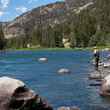


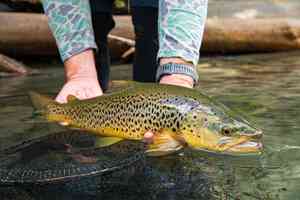


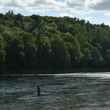



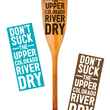



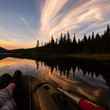





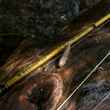


Comments
Matt S replied on Permalink
Thanks Chad and Hatch Mag for continuing to spread the word about restoring our rivers! Hope to see you on Oct 3rd.
Scott Herning replied on Permalink
Call Obama today 202-456-1111. Support him in an Executive Order to breach. Save orca, salmon, taxpayers billions and the greatest salmon producing river system on earth. He can leave a political legacy in the American landscape (regardless if you like him or not, he needs your call!)
Tom Peterson replied on Permalink
Get informed! The only way fish passage and spawning can occur on the Upper Snake River is to breach the three Idaho Dams (Hells Canyon, Ox Bow, and Brownlee). These Dams have zero fish passage and till they are removed, Central Idaho and the Snake River System will never see any migrating Salmon.
Tom Peterson replied on Permalink
Why is it that you can only focus on the four lower Snake River dams (they have fish passage) and not on the other Snake River Dams in Idaho that do not have fish passage? Hells Canyon, Ox Bow and Brownlee Dams have no fish passage and have completely shut down salmon or steelhead spawning above them since they were in place. Seems you are placing the blame on the wrong dams when the real problem was created by the next three dams upriver. Those Dworshak Dam on the Clearwater have fish passage? The answer is NO! Idaho has effectively shut down all fish passage and fish spawning on the Snake and Clearwater Rivers by the dams they have in place. Idaho needs to simply remove those dams and that would open up thousands of spawning areas for salmon and steelhead. Look at the Idaho Dams as the real problem Dams. Build fish passage systems on those dams or remove them to open up the Snake River and Clearwater for fish spawning. It is just to easy for you to blame the 4 lower Snake River dams, when in fact it is the IDAHO DAMS that are the root of the over all big picture. Way To Go Idaho!
Tom Peterson replied on Permalink
I agree with your statement that all the Snake River dams are stupid! Those Snake River Dams include Hells Canyon, Ox Bow, and Brownlee Dams. I am all for removing all the dams, just start with the Idaho Dams first as they have caused the most damage. (no fish passage available)
Tom Peterson replied on Permalink
The video leads the person watching that removal of the lower Snake River Dams will open up the Snake River System for Salmon clear into Central Idaho. The fact is that the three dams in Idaho have to be removed first in order to provide salmon the ability to reach those pristine spawning areas. Hells Canyon, Ox Bow and Brownlee Dams have to be removed first before the lower dams are removed. Removing the four lower dams does not solve the problem as the Snake River will still remained blocked by the next three dams that have no fish passage. While your concern is to be commended, it does not address the real issue. What dams stop the salmon completely and prevent any fish migration? That is where you start to solve the migration issue for Salmon and Steelhead. Remove the 3 Idaho Snake River Dams first! That makes sense any other plan is flawed.
Matt S replied on Permalink
Hi Tom,
I appreciate your enthusiasm, and understand your logic, but the reality is that the priority is removing the lower 4 Snake River dams, not the 3 upstream in Idaho. The short answer to why this is the case is as follows:
- The best protected spawning and rearing habitat, described in the film, is not upstream of the 3 Idaho dams you describe. The primary objective is to return "effective" fish passage to the Salmon River and it's tributaries (these are downstream from the 3 dams you describe, but upstream of the 4 lower Snake River dams.
- With climate change especially, the bigger issue limiting fish is poor water quality (elevated water temps and poor dissolved oxygen) within the reservoirs. The 4 lower Snake Dams are dead zones now that they trap and truck or barge fish around due to poor water quality and delays in migration. Removing the Idaho dams you describe doesn't solve the problem at the 4 lower Snake dams.
- So it's far beyond the lame fish ladders on those lower Snake dams, it's water quality, migration delays (especially downstream), non-native predatory fish in the reservoirs, trucking, bargain, etc.
Removing upstream dams in Idaho would be great, but as a second step after the lower Snake Dams. Doing it the other way, as you suggest, wouldn't be as effective. Please check out the links and reports at Save Our Wild Salmon website for the science on this. Thanks
Barb replied on Permalink
Thanks Matt, for explaining that to people that may not understand why we want those lower 4 breached !
Pages